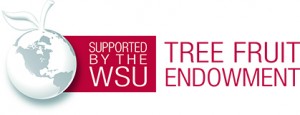NEWS

Gibberellic acid doesn’t need to be applied at high volume to be effective
Most cherry growers worldwide agree that an application of gibberellic acid (typically in the form of GA3) is beneficial for fruit quality on several levels – improved firmness, fewer defects, and, generally, a delay in…

Resources for Little Cherry & X-disease Scouting and Sampling 2022
Multiple resources are available for scouting and sampling of X-disease and Little Cherry disease during the 2022 season.
Evaluations of Conventional and Organic Insecticides Against Leafhoppers: First Year Results
Written by Louis Nottingham, May 2021 Introduction: Prior to this project, there was no available experimental information on insecticide toxicity against X-disease vectors Colladonus Reductus and C. geminatus (Fig 1). In 2020 we performed lab…

Nutrient Management in Sweet Cherries
In perennial fruit trees, most nutrient uptake occurs between bloom and rapid vegetative growth. Sweet cherry root growth starts when soil temperatures reach approximately 59 F during spring, usually after bloom in Washington soils. In…
2021 WA Tree Fruit Research Commission Grant Awards for Cherry
Date: May 2021 Authors: Ines Hanrahan, Amy May, and Mackenzie Perrault. In 2021, the WA Tree Fruit Research Commission approved $1,396,455 to help fund twenty-seven (27) new projects in the areas of cherry, apple, and…

Oídio del Cerezo
Figura 1. Oídio en frutas de cereza. Imagen cortesía de Claudia Probst y Gary Grove, WSU. Traducido por Jenny Bolivar-Medina. Extensión en transferencia de tecnologías e información (ITT), Washington State University, Mayo 7, 2021. Documento…
Sweet Cherry Breeding Program
Written by Per McCord, May 2021 The WSU sweet cherry breeding program (CBP) has continued to improve and expand since Dr. McCord was hired in April 2018. Laboratory and greenhouse spaces have been upgraded, and…
Pear Psylla Phenology Update
A phenology model for pear psylla was recently developed by Dr. Vince Jones. This model predicts the relative number of pear psylla from each life stage occuring as degree days are accumulated.
LATEST VIDEOS

Enfermedad de la cereza pequeña en cerezos
Bernardita Sallato comparte información respecto a la enfermedad de la cereza pequeña, síntomas para su identificación, medidas de prevención y control de vectores.
X-disease Phytoplasma and Little Cherry Virus Scouting and Sampling Guide
WSU and OSU guide for scouting and sampling for X-disease and Little cherry virus. Includes major symptoms, symptom progression, other disorders which cause similar symptoms, scouting and sampling steps, and grower examples.

Symptoms of X-disease Phytoplasma in Stone Fruit
X-disease in peaches, plums and nectarines causes yellow leaves, shot hole and small deformed fruit.

Symptoms of Little Cherry Virus and X-disease Phytoplasma
X-disease phytoplasma and Little cherry virus 2 cause small, pale deformed fruit in cherries. This video shows symptoms in a number of varieties.

Scouting and Sampling for Little Cherry Disease
Tips on scouting and sampling for X-disease and Little cherry disease which cause small, pale unmarketable fruit in cherries.
OPPORTUNITIES
Job Opportunity: Little Cherry Extension
Position: Extension Coordinator Location: PROSSER, IRRIGATED AGRICULTURE RESEARCH CENTER The Extension Coordinator is responsible for providing oversight and leadership for Little Cherry Disease (LCD) Extension and Outreach program, including originating and/or developing formal education programs related to LCD….
WORSHOPS
Virtual Honeycrisp Meetup
Virtual Honeycrisp meetup. A collaborative effort between WSU, MSU and Cornell Extension. Supported by IFTA, Root to Fruit project and Good Fruit Grower.
PUBLICATIONS
Sweet Cherry Cultivars for the Fresh Market
Authoured by L. Long, A. Thompson, and M. Whiting. 2021 PNW publications. A guide for Pacific Northwest sweet cherry growers on new cultivars and their characteristics. Including fruit size, firmness, rain-cracking resistance and shipping potential…
EVENTS
Virtual Honeycrisp Meetup
Virtual Honeycrisp meetup. A collaborative effort between WSU, MSU and Cornell Extension. Supported by IFTA, Root to Fruit project and Good Fruit Grower.
TEAM
Karen Lewis
Tianna DuPont
Gwen Hoheisel
Marcella Magby
Manoella Mendoza
Claire Murphy
Jodi Rinaldi
Bernardita Sallato
Tory Schmidt
Ricardo Lima Pinto

